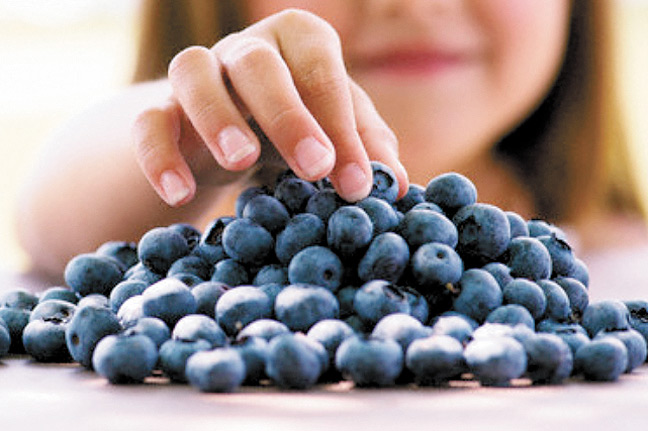Cornell Corner
How joint marketing can help the maple industry
By MICHAEL FARRELL |
At the most recent meeting of the International Maple Syrup Institute and North American Maple Syrup Council in Nova Scotia, the IMSI brought in Ellen LaNicca to speak about joint marketing efforts in the agricultural sector.
Ellen is a Senior Vice President at PadillaCRT, a public relations and marketing agency that specializes in food, beverage and nutrition. They are very familiar with the maple industry given that they have been working on marketing efforts for the Federation of Maple Producers in Quebec.
This article summarizes the main highlights from Ellen’s talk- all of the information and figures seen in this paper are based on her presentation.
Ellen covered many examples in the agricultural sector where producers have joined forces to help promote their product. In particular, she highlighted blueberries, avocados, mangos, mushrooms, dairy, and cranberries. She spent the most time discussing the efforts of the U.S. Highbush Blueberry Council, so this article will focus on blueberries as an example of what another industry is doing to promote their product in a highly competitive landscape. It’s interesting to note that this group represents blueberry growers and packers in both North & South America who market their blueberries in the U.S. It promotes the growth and well-being of the entire industry, and thus parallels can be made with the IMSI that works on behalf of both the U.S. and Canadian maple producers and packers.
However, unlike the maple industry, their activities and promotions are overseen by USDA as part of an industry-wide “Checkoff” program where all members contribute.
In order to get greater context for the blueberry industry, consider that in 2012, the domestic U.S. Highbush Blueberry crop was valued at $782 million by the USDA. The current assessment on blueberries is $18/ton and has been recently increased from $12/ton in 2013. In 2014, their budget for domestic promotion was $2.2 million and they also allocated $1.5 million for research on health benefits of blueberries.
The Council had been successful in growing demand over the years, but in 2009 the industry was at a crossroads. Blueberries were flooding the market, there were many similar products vying for consumer attention, the majority of blueberry consumers were white, well-to-do baby boomers, and the industry needed to find new customers.
They knew that great, sustainable brands are grounded in emotion. They wanted to not only tap into people’s minds, but also into their hearts. Thus, they married the functional health benefits of blueberries with something deeper and closer to the hearts of their new target audience, women 25-45. They conducted a great deal of consumer and market research to determine what people loved about blueberries and what would make folks love them even more.
The new branding called Little Blue Dynamos® hit shelves and school menus in 2011. They updated their award-winning website to be brimming with lifestyle imagery, blueberry recipes, nutrition facts and kids’ activities.
To grow demand, the blueberry industry leveraged the millions of moms who communicate via social media every day. They built relationships with food/lifestyle blogs; sparked development of hundreds of recipes; had contests and grassroots efforts to recruit 50,000+ Facebook fans, and curated content on both Twitter and Pinterest.
They hired Alison Sweeney, host of NBC’s “The Biggest Loser,” author of “The Mommy Diet,” and a working mom-of-two to be their spokesperson. They also worked with School Foodservice personnel and Registered Dietitians to help spread the word to children and people interested in healthy eating.
These efforts have been extremely successful, North American blueberry consumption has nearly tripled since PadillaCRT began working with the Blueberry Council and all of their members, with per capita consumption climbing from 15.5 oz. in 1995 to 39.5 oz. in 2011.
None of this would have been possible without making large investments in market research and promotion efforts, and the only way that was possible was by amassing a large sum of money by having all stakeholders chip in a small portion of their annual revenues.
No individual growers would have been able to make any type of impact on the marketplace, but having everyone pitch in to hire a first-rate marketing firm to work on their behalf certainly has paid large dividends. By investing in joint marketing efforts, the blueberry growers were able to increase their market share and profits, and the industry continues to grow.
So what does the experience with blueberries tell us about maple? There have been some discussions recently about possibly implementing a market order for maple syrup similar to what is done for blueberries and many other agricultural commodities. It isn’t clear what will ever happen with that idea, but there are certainly going to be many people for it and many people against it.
However, if we ever get in to a situation where we really need to develop new markets for pure maple, we would be wise to try to learn from other industries to see what has worked well and what hasn’t worked so well. Some joint marketing efforts have been extremely successful and others haven’t, so learning from others would help set us up for greater success.
The Federation is already a living example of joint marketing and promotion in Quebec. No matter what you think about the Federation, you can’t deny that they have helped to stabilize prices and expand markets for pure maple throughout the world.
The U.S. maple industry wouldn’t have expanded nearly as much over the past decade if the Federation had not stabilized bulk prices and developed additional markets for pure maple outside of Quebec. We will never implement a quota system here in the U.S., but could we put a small percentage of our syrup sales into a joint marketing effort to help grow demand? That remains to be seen, but before we embrace or disregard that notion, it only makes sense to study how other agricultural industries have utilized joint marketing efforts to learn from their successes and mistakes.
We were fortunate to have Ellen LaNicca come to the IMSI/NAMSC meeting to get the discussion started on this topic and we would be wise to continue these discussions further, especially if supply continues to grow at a faster pace than demand and prices/profitability fall.
Survey Says
In terms of achieving their mission of getting blueberries recognized as being fun, healthy snacks, a 2013 Harris Survey of women 25-49 found:
94% agree that blueberries “pack a powerful punch of health”
78% say that blueberries “add a little boost” to their day
76% agree blueberries “fuel fun activities”
73% of moms with children under 18 agree their kids think “it’s fun when blueberries are served”
February 2015
































